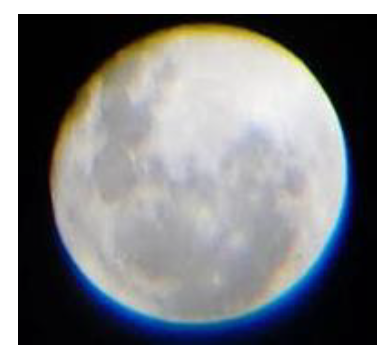INTRODUCTION
From the dawn of time humans have observed the universe, first with the naked eye (yet from these observations it was possible to derive Kepler’s laws), and later with the help of everimproving telescopes, which were placed on Earth's orbit in the 20th century. We refer to this field as optical astronomy.
Types of astronomy
Optical astronomy studies what is visible to the human eye and in the near regions of the spectrum, i.e. the ultraviolet (UV) and infrared (IR) regions. It comes with a disadvantage, when a cloud comes, nothing can be seen. As for the infrared band, even without a cloud the observation might be largely destroyed by water vapour in the atmosphere. Therefore, IR observatories are built mainly in deserts (e. g. ESO - European Southern Observatory in the Atacama Desert in Chile).
Radio astronomy studies the universe in the band of radio waves. For instance, solar flares occur at all frequencies, and really strong flares can cause radio and television transmissions to fail.
Particle astronomy captures subatomic particles that arrive from space. For instance, a trace appears in the cloud chamber from time to time without placing any radiation source in the chamber. We talk about the so-called cosmic rays.
Astronomical Telescopes
Galilean telescope
Historically, the oldest type of telescope is the Galilean telescope, i. e. the Dutch telescope, which is composed of a converging lens, that forms the objective lens, and a diverging lens, that forms the ocular lens. This telescope was patented in 1608 by the Dutch optician Hans Lippershey (sometimes referred to as Lipperhey). With this telescope, Galileo made several important discoveries. He discovered the four largest moons of Jupiter (which we now call the Galilean moons), the phases of Venus, and the sunspots. However, this telescope has a relatively small field of view, so nowadays we can find it mostly in opera glasses.
Kepler telescope
A more perfect telescope is the Kepler telescope, i. e. observatory telescope (ca. 1611). It is formed by a converging lens with a larger focal length, which forms the objective lens, and a diverging lens with a shorter focal length, which is used as an ocular lens and positioned in a way that the image point of the objective lens coincides with the focal point of the objective lens. The disadvantage of this telescope is that it is relatively long (its length is given by the sum of the focal lengths of the objective and ocular lenses) and inverts the image laterally and vertically. This is not a problem for astronomical observations, but for terrestrial observations, the Kepler-type telescope is adjusted using a pair of mutually perpendicular prisms, one of which flips vertically and the other one laterally. At the same time, due to the fact that rays travel a part of the way in the opposite direction, the length of the telescope is shortened. If we place two such telescopes next to each other for observation with both eyes, the result is called a binocular.

Figure 1: Colour error when observing the Moon
Newtonian telescope
Dispersion on the objective lens can also be avoided by using a mirror as the objective lens. The Newton-type telescope, which uses a parabolic mirror as an objective lens, is currently the most widely used telescope for astronomical observations, whether professional or amateur. The objective lens of the reflector is thus formed by a primary hollow parabolic, spherical or hyperbolic mirror. The image of the object is then reflected by the secondary mirror, and finally observed through the ocular lens. The hollow mirror connects the parallel rays of the observed object and concentrates them in one point, thus creating a real image. However, this image is in the direction of the incident rays. By observing the image directly, the observer would obscure the incident light, so a flat mirror is placed in the path of the merging rays, which guides the rays directly into the ocular lens and allows observation.
The advantage of reflectors is the absence of colour errors. This is because the mirror telescope does not have chromatic aberration, which is caused by the fact that the reflection does not decompose the white light into individual coloured rays. The second advantage of reflectors is an easier production of glass for making a mirror than glass for making a lens. This is because the glass used to make a mirror may not be homogeneous, because light does not pass through it. It’s just a base on which a layer of reflective metal is applied. Another advantage is the arrangement of the tube, which is smaller in comparison to refractors, because light is reflected in it and the heavy mirror is placed on the side of the observer, while the objective lens of the refractor is placed on the outer end of the tube.


